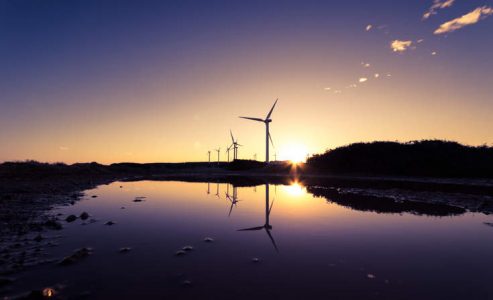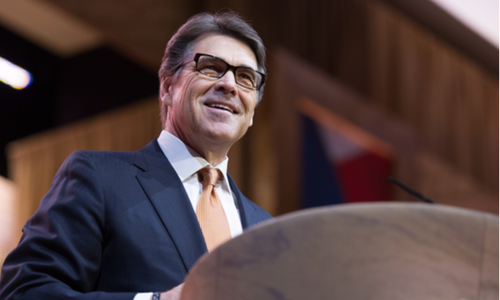Energy

Ken Makovsky
Thursday, February 26, 2015On June 2, 2014, the EPA announced its “Clean Power Plan” (CPP) Proposed Rule. The EPA describes this as “a commonsense plan to cut carbon pollution from power plants,” with the goal of reducing greenhouse emissions by 30% by 2030. The prevailing issue is that states and regions are very unique in how they generate their electricity. California is heavy on solar; a lot of the Midwest relies on coal; the Northeast uses natural gas, etc. How can one federal body impose the same regulation across all 50 states and expect full compliance? To answer that question, the EPA solicited replies from stakeholders across the country.
Within the rulemaking process, the EPA asked for comments from the general public. In a defiant display of democracy, or possibly concerted effort by interest groups and lobbies (you pick), over 3 million Americans sent in their thoughts. The EPA also asked state regulators, utilities and companies to draft their comments to the proposed rule.
I recently attended an event with folks from this latter group to discuss their viewpoints and opinions on the CPP. Stakeholder Perspectives on EPA’s Proposed Clean Power Plan was hosted by the Bipartisan Policy Center here in DC at their headquarters. Before jumping into my rundown, here’s a 30,000-foot view of the BPP.
BSER. That’s another acronym you’ll hear a lot when discussing this proposed rule.

Referencing my earlier thoughts on a ubiquitous rule for a large country with a diverse energy mix, the EPA has set state goals after determining the Best System of Emission Reduction. They’ve broken this down into four key building blocks that are being implemented now and hopefully, implemented more broadly across our power system. They are:
(1) Measures to make coal plants more efficient;
(2) Increased use of high efficiency, natural gas combined cycle plants;
(3) Generating electricity from low/zero emitting facilities; and
(4) Demand-side energy efficiency.
Simple enough, right? The BPC panels representing just about every region of the US didn’t seem to think so. The prevailing request of the EPA by the panels was that their states and regions need flexibility. Just about every panelist expressed serious doubts that their respective areas could fully comply with the CPP and were adamant that the EPA needs to work with states and be understanding of individual needs.
Henry Darwin, Director of the Arizona Department of Environmental Quality, noted how hot it gets in his home state in the summer. When air conditioning use is going through the roof, power producers turn to coal to satiate demand. Mr. Darwin said it would be absolutely  impossible for AZ to get off coal by a 2020 deadline. Lisa Edgar, the Commissioner of the Florida Public Service Commission echoed these sentiments and added a few more. Ms. Edgar, who is also president of NARUC, listed flexibility, reliability, jurisdiction and cost impact as her groups’ biggest concerns with the pending rule.
impossible for AZ to get off coal by a 2020 deadline. Lisa Edgar, the Commissioner of the Florida Public Service Commission echoed these sentiments and added a few more. Ms. Edgar, who is also president of NARUC, listed flexibility, reliability, jurisdiction and cost impact as her groups’ biggest concerns with the pending rule.
Robert Kenney, the Chairman of the Missouri Public Service Commission, a state that gets 80% of its net generation from coal, called for maximum flexibility for states. He also touched on the EPA’s interim goal. This is related to the EPA’s proposed two-part goal structure that includes an “interim goal” that a state must meet on average over the ten-year period from 2020-2029 and a “final goal” that a state must meet at the end of that period in 2030 and maintain thereafter. Mr. Kenney thinks the interim goal is impossible. As does Gerry Anderson, Chairman and CEO of DTE Energy.
Quinlan Shea, VP of Environment at Edison Electric Institute, took it a step further. He wants the EPA to throw out the interim requirements and replace them with individual checkpoints that are more customized and realistic. Todd Foley from ACORE, expressed concern that since 2020 is right around the corner, the rule could bias the market with compliance cliffs that may hinder the smartest and most cost-effective resources. This would clearly be counter-intuitive.
Another issue for these energy professionals was that the CPP was not taking previous upgrades to power systems into account. Bob Martineau, Commissioner of the Tennessee Department of Environment and Conservation, expressed the desire for states and utilities to get credit for voluntary/ pre-regulatory actions they may have already taken. Jack Ihle of Xcel Energy also called for early action fixes to the rule.
As an update, last week the Federal Energy Regulator Commission (FERC) held its first of a series of technical conferences on the Clean Power Plan. In other words, this issue is top of mind here in DC.
The EPA also recently announced it will finalize the proposed CPP by mid-summer of this year. The shot clock is ticking and it will be fascinating to watch these coming months and the actions taken to shape the final rule. As we move through the spring, stay tuned to makEnergy’s blog page to keep up to date.
– @BSmithDC











